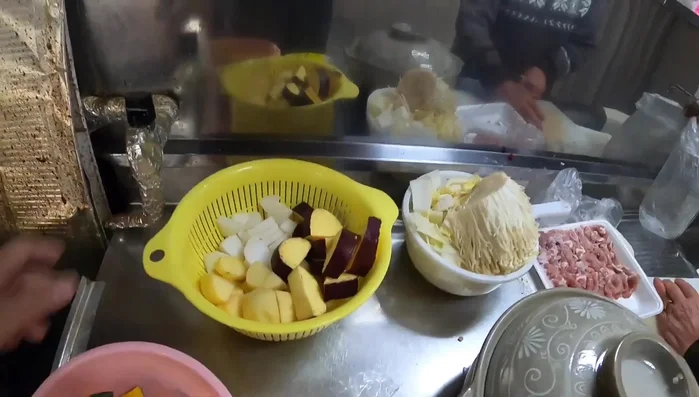Hoto nabe is a hearty and soul-warming Japanese hot pot perfect for chilly evenings. This rustic dish features wide, flat udon noodles swimming in a rich, savory broth, often flavored with miso and vegetables like mushrooms, daikon radish, and leafy greens. Unlike many delicate Japanese dishes, hoto nabe embraces a wholesome, rustic charm, making it both comforting and satisfying. Its versatility allows for customization based on your preferences and available ingredients, ensuring a delicious and unique experience each time. The depth of flavor comes from a carefully balanced broth and the satisfying chewiness of the hoto noodles.
Beyond its deliciousness, hoto nabe is surprisingly simple to prepare, even for novice cooks. The key is to build layers of flavor in the broth and to cook the noodles until perfectly al dente. Ready to create your own comforting bowl of this Japanese winter staple? Let's dive into the step-by-step process!
Tools Needed
Ingredients
- Pumpkin
- Radish
- Noodles (likely udon or similar)
- Itapo (requires further clarification)
- Other vegetables (likely based on preference)
- Broth (likely dashi or similar)
Step-by-Step Instructions
Step 1. Prepare the Vegetables
- Add pumpkin to the pot.
- Add pumpkin, radish, and other vegetables to the pot.


Step 2. Add Broth and Itapo
- Add Itapo (requires further clarification).
- Add broth to the pot.


Step 3. Simmer and Cook
- Simmer the ingredients until they are cooked through.

Step 4. Serve and Enjoy
- Serve and enjoy!

Read more: Authentic Japanese Beef Sukiyaki Recipe - Easy & Delicious Hot Pot
Tips
- Hoto Nabe is a very healthy and delicious dish.
- Hoto Nabe is traditionally eaten during winter in Japan and is considered one of the most popular winter foods (nabe).
Nutrition
- N/A
FAQs
1. Can I use different types of noodles instead of hoto noodles?
While hoto noodles are traditional, you can experiment with other thick noodles like udon or even wide rice noodles. The cooking time may need adjustment.
2. What kind of vegetables can I add to my hoto nabe?
Be creative! Mushrooms, daikon radish, carrots, spinach, cabbage, and burdock root are all popular choices. Feel free to add your favorite seasonal vegetables.
3. Can I make the broth ahead of time?
Yes! Making the broth in advance allows the flavors to meld and deepen. Store it in the refrigerator and reheat before adding the noodles and vegetables.
Enjoy your warm, comforting bowl of hoto nabe! This recipe is a perfect blend of ease and deliciousness, making it an ideal dish for a cozy night in. From now on, you can easily share this heartwarming Japanese tradition with family and friends.
